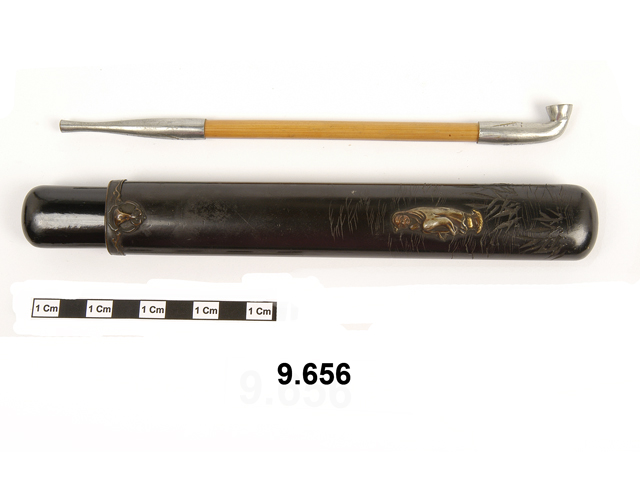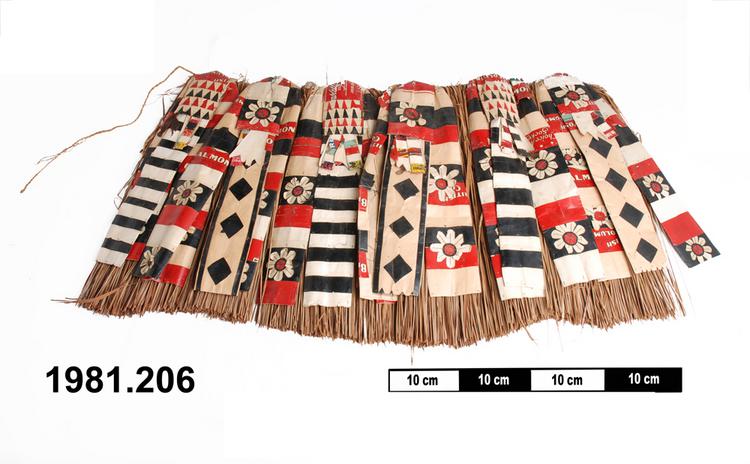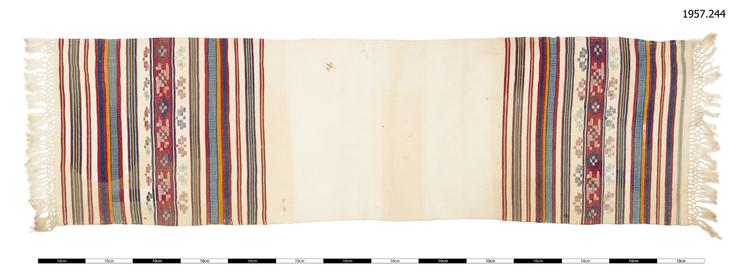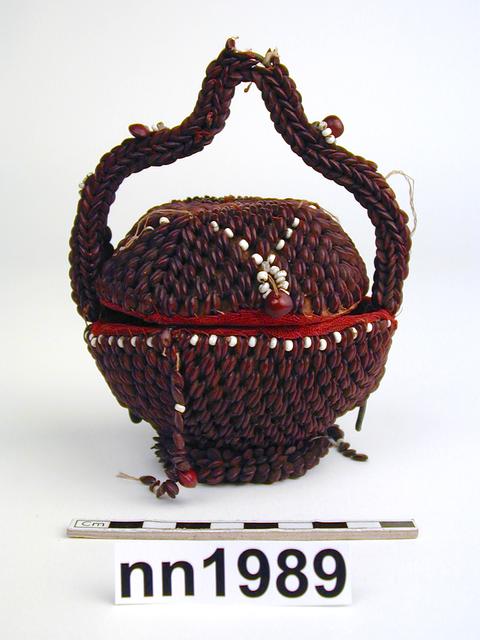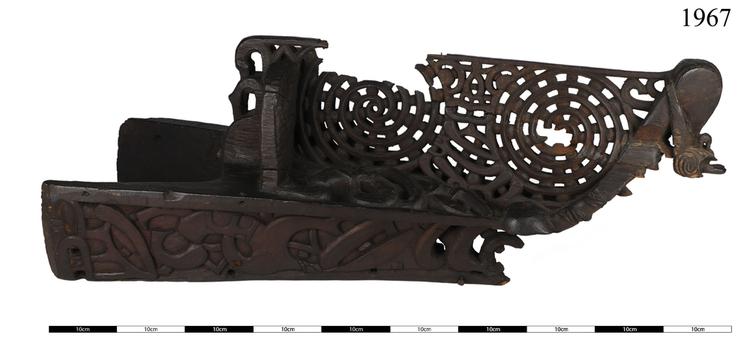
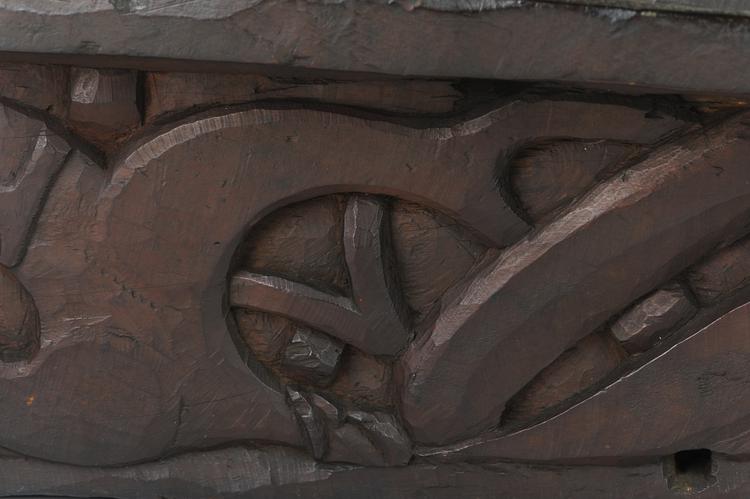
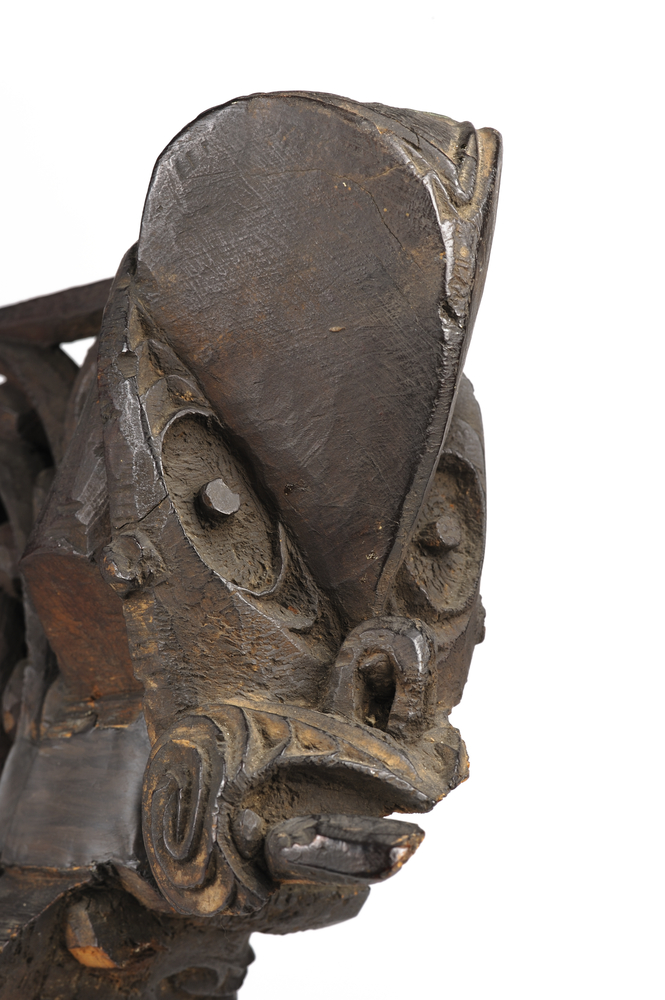
Prow of war canoe carved from totora wood in a single piece . The structure is basically triangular and fits over the end of the main hull piece of a Maori war canoe (waka taua) . Rising from the main triangular structure is a vertical panel that is square ended at the inner end and slopes forward to a point at the tip. This tip is formed into a defiant human face engraved with te moko and exposing his tongue. This figures eyes would have originally been inlaid with haliotis shell rings but these are now missing. Behind this figure the vertical panel is carved in fretwork featuring two double spirals interspersed with spherical structures. These are being held by an abstract human figure standing face on towards the viewer. This scene depicts an apical ancestor bringing the light of mana into the world. Underneath this scene another figure is divided in half by the panel and can only be viewed by standing in the prow of the boat. Underneath this figure on the lowest side of the tauihu are two other figures highly contorted with halved faces that would only become fully visible when reflected in still water.
Prow of a War-Canoe, Tauihu, New Zealand Maori For the Maori, canoes (waka) are immensely significant: they traditionally understand each of the iwi (clans) to have arrived in New Zealand in one or another of a small number of great voyaging canoes that set out from Hawaiki, their ancestral homeland, some 800 or more years ago. The location of Hawaiki has been attributed to a number of different places in tropical Polynesia, and archaeologists disagree over how many different settlement events there may have been in New Zealand’s remote prehistory, but we can say with certainty that boats have always been central symbols for the Maori sense of cultural identity and belonging. This manifested in the immense labour expended on the production of waka tau (war canoes). Commonly 25 m long or more, such waka were carved from mature totara trees (Podocarpus totara) and had fine woodcarvings (whakairo rakau) socketed into their bow and stern, while many also bore ornamental fretwork strakes running along their sides. While the high, rectangular stern-pieces (taurapa) of Maori war-canoes have also been much celebrated, elaborate prows (tauihu) such as this example are rightly regarded as some of the finest Oceanic artworks. The striking fretwork spirals (pitau) appear on nearly all such prows and are widely associated with the emergence of ancestral and divine mana (supernatural power) into the material world. For the tohunga whakairo (carver), the artistic challenge was to carve the traditional form in a way that was true to his local style of carving, while at the same time making the figurehead seem dynamic and surging, and the spirals seem light and fluid. Hardwood. Mid-19th Century. Bought by Frederick Horniman in London before 1898.



